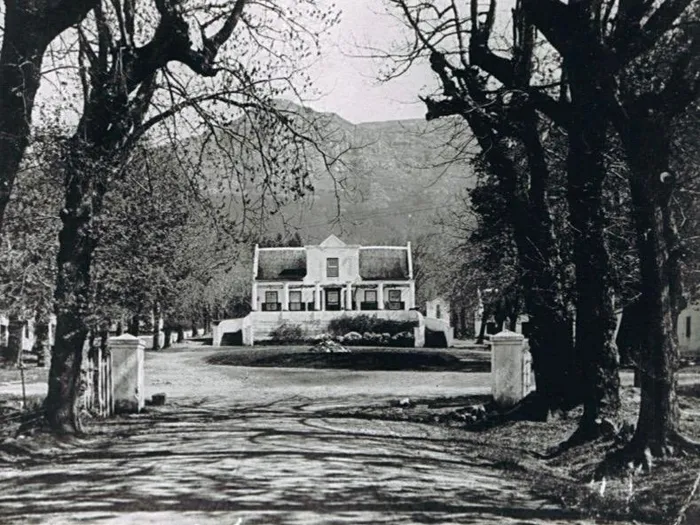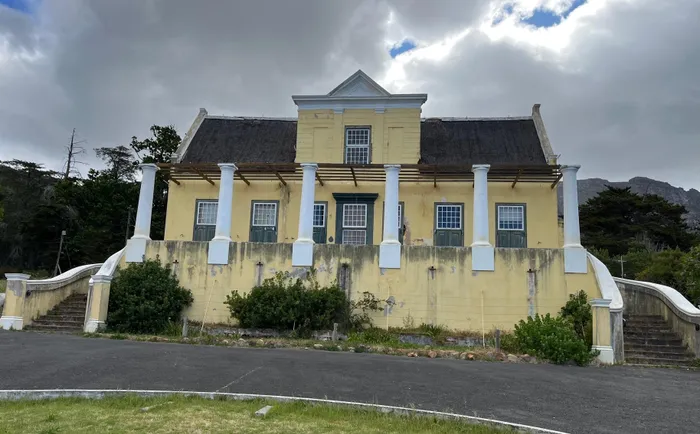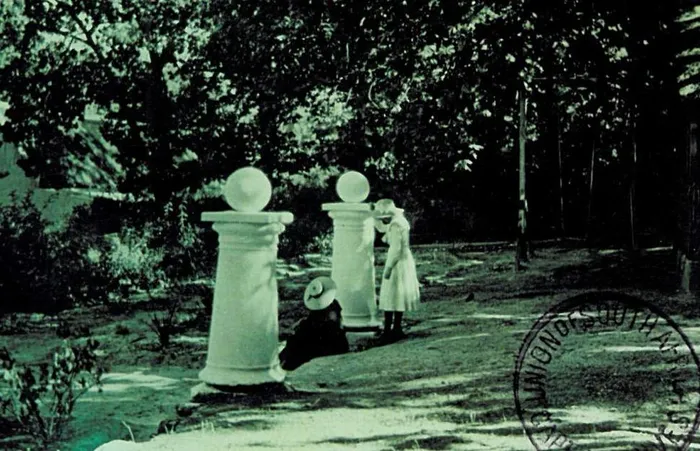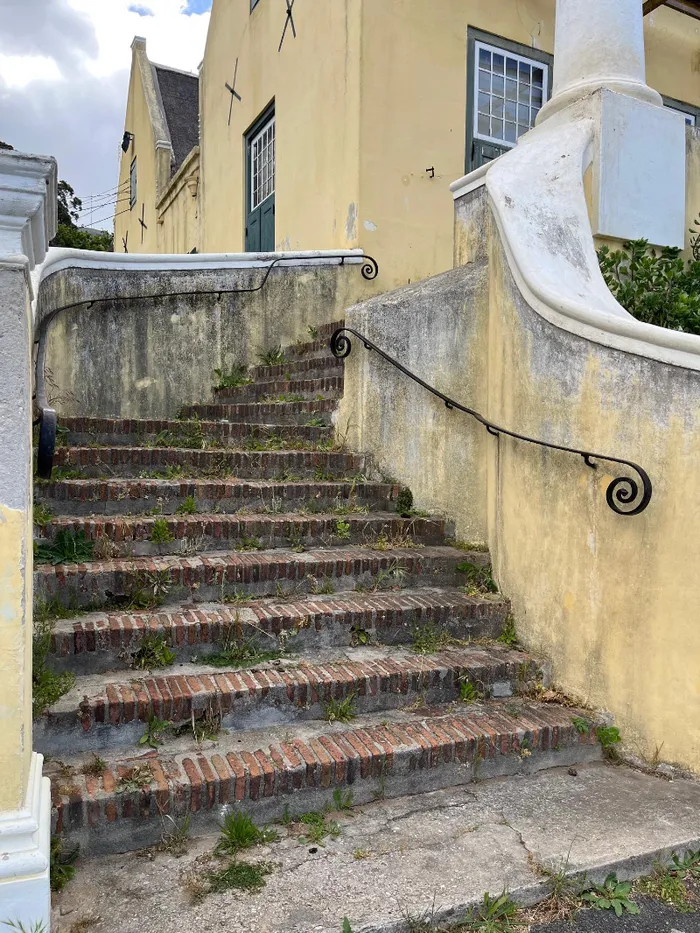The haunting history and neglect of Tokai Manor House

A Picture of Tokai Manor House in all its splendour in the late 19th century.
Image: SANParks
It is said that a ghostly horseman haunts the Tokai Manor House, but the only frightening thing about it is its current state of neglect.
Once one of Tokai’s finest homesteads, celebrated for its architecture and history, the manor now stands as a stark reminder of unfulfilled promises after a 2023 funding pledge from SANParks, the property’s owner, failed to secure its restoration.
The Cape-Dutch manor, designed by French architect Louis Michel Thibault and built in 1796, was declared a National Monument in 1961. Now classified as a Provincial Heritage Site following updates to the National Monuments Act, all declared Provincial Heritage Sites require a Conservation Management Plan (CMP), said Brett McDougall, director of the Muizenberg Historical Conservation Society.

The current state of Tokai manor House.
Image: Yolande du Preez

The rear terraces of Tokai Manor House in the early 20th Century.
Image: SANParks/Elliot
“The CMP specifies in some detail the obligations of the owner to maintain and protect the site. Lack of adherence to the CMP may be reported to Heritage Western Cape, who may ultimately issue a restoration order,” he said.
However, there is no restoration order in place for the manor, said SANParks spokesperson JP Louw, but a process is currently underway to appoint a structural engineer and heritage architect to conduct a condition assessment of the manor and surrounding precinct to guide future restoration efforts.
“A site visit was recently conducted by Heritage Western Cape, and recommendations were provided,” said Mr Louw.
Legend has it that the manor is haunted by the ghost of a horseman who rides through the building and surrounding forest each New Year’s Eve. The story dates back to a party held by the Eksteen family, who once owned the estate.

A resent picture of the rear terraces of Tokai Manor House.
Image: Yolande du Preez
According to South African History Online, during one of the Eksteen family’s lavish New Year parties, Petrus Eksteen dared his son Frederick to ride his horse up the stairs and into the dining room. Frederick accepted the challenge and rode into the room to the cheers of their guests. As he exited, the horse slipped on the steep steps, and both horse and rider fell to their deaths.
It is said that the echo of hooves and the shadow of a rider can still be heard and seen at the manor every New Year’s Eve.
The tragedy is part of a long and layered history of the manor, located below Elephant’s Eye in the Tokai Forest. The farm was first granted to Johan Rauch in 1792 but was sold two months later to Andries Teubes, who is believed to have built the manor between 1795 and 1796.
The gable of the manor is thought to be one of the earliest examples in the Cape of a rectangular pediment. The cost of building the house, however, left Mr Teubes financially ruined, and he declared bankruptcy in 1799. After passing through several owners, the property was bought by Petrus Eksteen in 1802. At the time, it was regarded as one of the most impressive homesteads on the Peninsula, notable for its raised front stoep - a feature uncommon in traditional Cape-Dutch architecture.

The staircase where, according to legend, Frederick Eksteen and his horse fell to their deaths after he rode the horse upstairs on a dare at a New Year’s Eve party.
Image: Yolande du Preez
The Eksteen family became well known for their hospitality and wine cellars, but financial troubles eventually caught up with them, too. In 1883, the colonial government acquired the property and used it as a reformatory for a period. The manor underwent extensive restoration during the 1960s after which it was declared a National Monument.
In 2023, media reports stated that SANParks CEO Hapiloe Sello said the park, which includes the Tokai precinct of Table Mountain National Park (TMNP), had been allocated an additional
R35.9 million for infrastructure maintenance over three years, and that R28 million of that sum was earmarked for Tokai precinct works.
However, those allocations did not translate into the restoration of the manor itself. Mr Louw said the R28 million referenced in 2023 was allocated to infrastructure upgrades within the Tokai precinct as well as the Rhodes Memorial Restaurant. Of this amount, he said, R20.8 million was designated for the Tokai Bulk Services Upgrade Project, and R9 million was allocated to the Rhodes Memorial Restaurant project, according to the scope of works that need to be completed.
Mr Louw said the Tokai Bulk Services Project, which includes upgrades to water, sewerage, and electrical systems across the precinct, began in August this year and is scheduled for completion by June next year. He said these bulk services are essential to support future tourism and operational developments, and as a result, the Tokai Manor House could not be included in the current project due to budget limitations, but would be addressed in the next phase.
“SANParks remains committed to the long-term preservation of this cultural heritage site and will communicate the next steps once the current bulk services project is completed,” he said.
Tokai Residents' Association chairman, Don Kourie said the association hopes that the Tokai Manor House will be restored and repaired by the government and provincial authorities responsible for doing this.
"The manor house forms part of the Constantia Valley's historical heritage, and it is important that it should be recognised as such," he said.